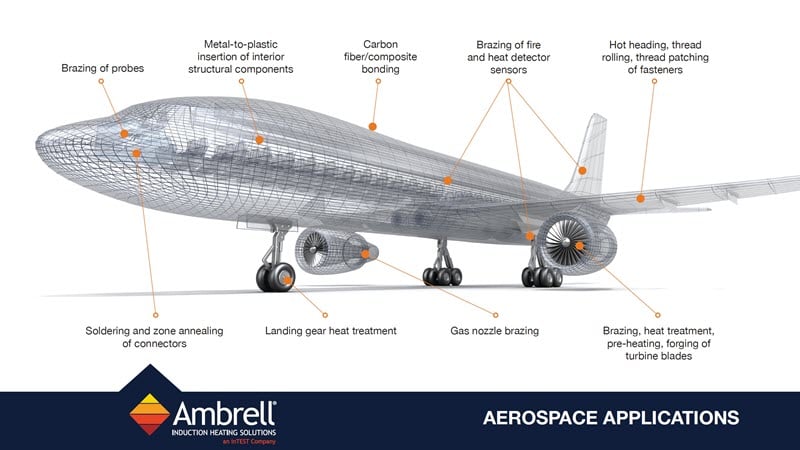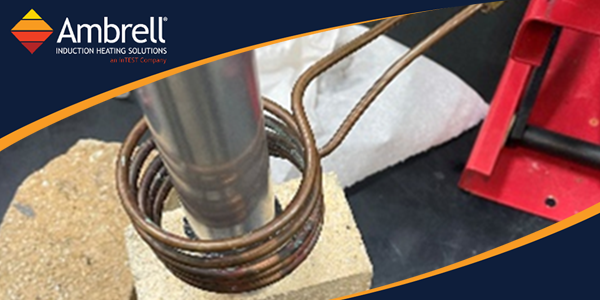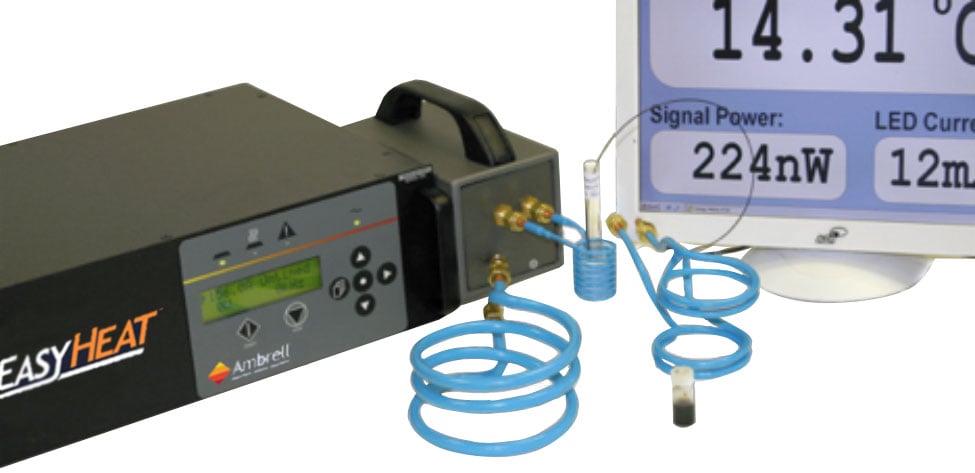Induction Brazing an Aluminum Assembly
Objective A company wanted to assess using induction heating for their aluminum assembly brazing process, and contacted THE LAB at Ambrell to utilize...
Applications
Applications: More
Applications: More

Industries:
Industries: More
Industries: More
Industries: More

Products:
Products: More
Services:
Services: More

Learn:
Learn: More
About:

2 min read
Brett Daly
9/25/23 4:48 PM

Induction heating is used for a number of manufacturing applications in the aerospace and defense industry. This is because of induction heating's versatility and efficiency among other benefits, and the applications are numerous including preheating for welding, brazing, heat staking, heat treatment and much more.
Induction heating is a non-contact heating process that uses electromagnetic induction to heat electrically conductive materials. An alternating current is passed through a coil, which creates a magnetic field. When a conductive part is placed in the magnetic field, an electric current is induced in the object. The resistance of the object to the current generates heat, which in turn heats the part.
Induction heating offers a number of benefits for aerospace manufacturing, including:
Induction heating is very efficient, with up to 90% of the electrical energy converted to heat. Other traditional heating methods can be well under that number. This results in energy savings and green benefits.
Induction can be used to heat specific areas of a workpiece with great accuracy, while not heating areas that do not require heating. This is important for aerospace manufacturing, where parts must be manufactured to precise tolerances.
Induction heating is a very repeatable process, meaning you can expect the same result time after time, which is important for ensuring the quality of aerospace components.
Induction heating can heat materials very quickly, often faster than competitive heating methods, which can reduce cycle times in production.
Induction heating is a clean process that does not produce any fumes or smoke. This makes it a comparably safe and environmentally-friendly heating method.
Induction heating is used for a variety of applications in aerospace manufacturing, including:
Induction heating can be used to braze aerospace components. Induction brazing is a strong and reliable joining method that is ideal for several aerospace applications.
Induction heating can be used to heat treat aerospace components, such as landing gears, turbine blades, and engine parts. Heat treatment improves the durability, strength, and hardness of these components.
Induction heating can be used to preheat prior to welding for aerospace components such as turbine blades. It is fast, precise and repeatable preheating method that reduces cycle times.
Induction heating is also used for other applications in aerospace manufacturing, such as curing composites, soldering and zone annealing connectors, heating staking internal structural components, bonding materials, and shrinking fitting parts.
Examples of induction heating in aerospace manufacturing
Ambrell offers complimentary applications testing from THE LAB so you can prove the viability of your application prior to purchasing a system. Learn more about our free applications testing and how your company can benefit by visiting our website

Objective A company wanted to assess using induction heating for their aluminum assembly brazing process, and contacted THE LAB at Ambrell to utilize...

Induction heating is a process that uses electromagnetic fields to heat electrically conductive materials. It has been used in numerous industries...

Induction heating, a process that uses electromagnetic induction to heat electrically conductive materials, is often thought of for large industrial...